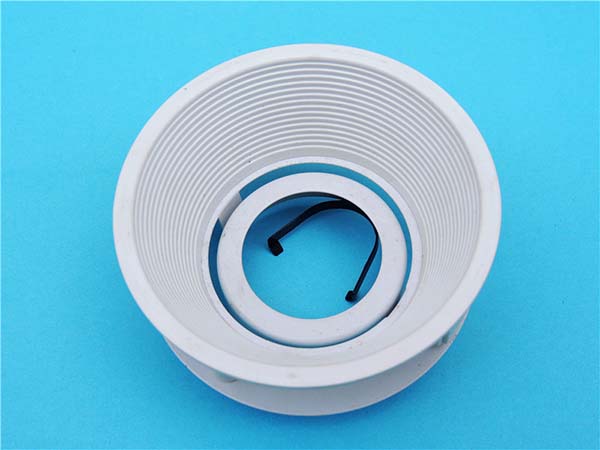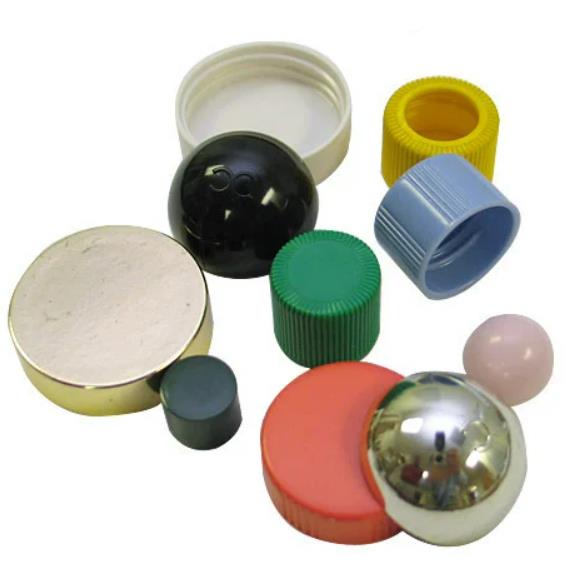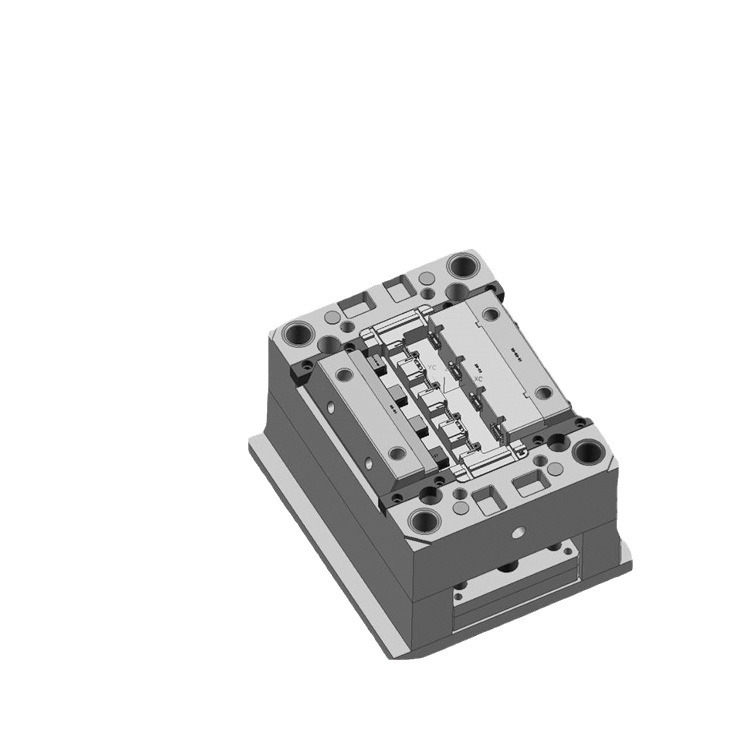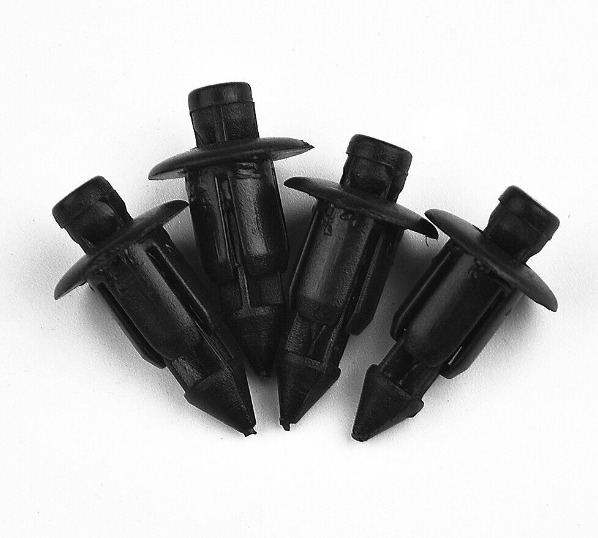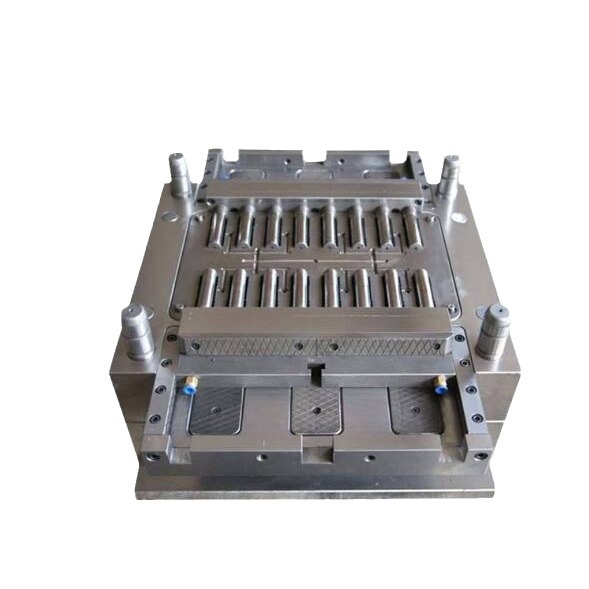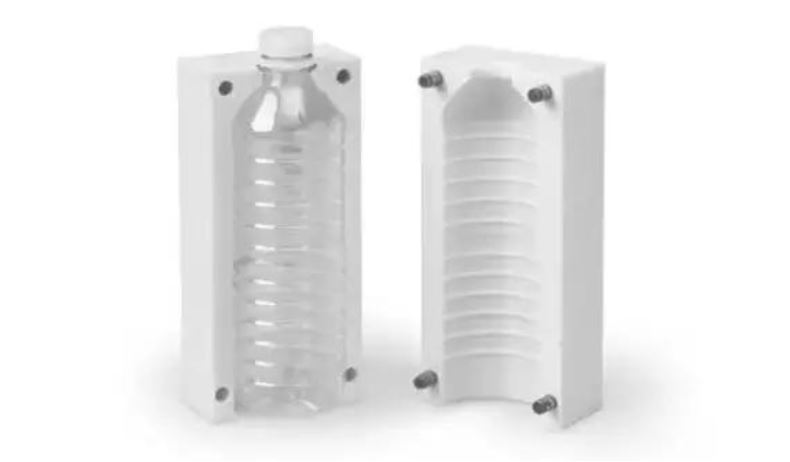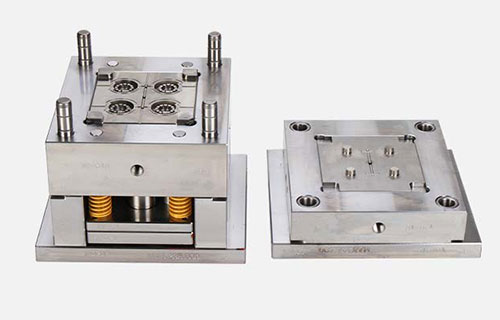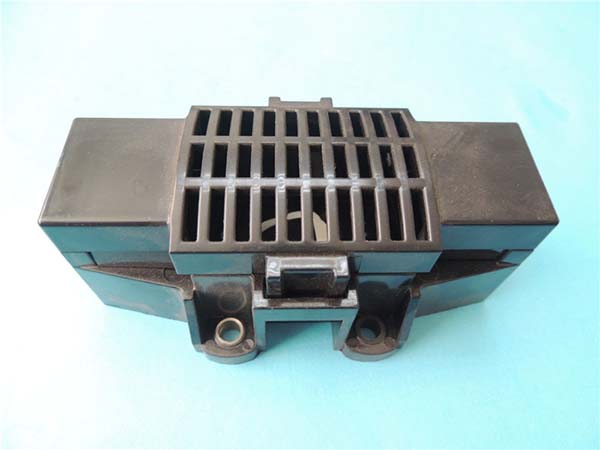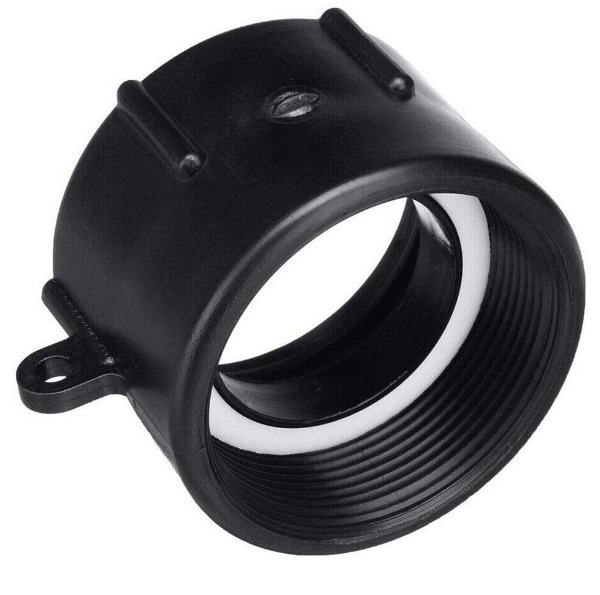Introduction
What is Medical Plastic Injection Molding?
Medical plastic injection molding is a specialized manufacturing process that involves injecting molten plastic into a precision - designed mold to create intricate and high - quality plastic components for medical applications. This process begins with plastic pellets being fed into an injection molding machine. The machine heats the pellets until they reach a molten state, at which point they are forced under high pressure into a mold cavity. Once the plastic has cooled and solidified within the mold, the mold is opened, and the finished plastic part is ejected.
This technique is highly versatile, capable of producing a vast range of medical components, from small, delicate parts like syringe plungers to larger, more complex items such as medical device housings. The molds used in medical plastic injection molding are often made from high - quality steel or aluminum, engineered to exacting tolerances to ensure the consistent production of parts with precise dimensions.
Key Aspects of Medical Plastic Molding
Materials Used
Common Medical - Grade Plastics
- Polypropylene (PP): PP is a widely used medical - grade plastic. It is lightweight, has excellent chemical resistance, and can withstand high temperatures, making it suitable for applications such as autoclaving. In the medical field, it is commonly used in the production of syringes, surgical instruments, and laboratory equipment like beakers and test tubes. Its high melting point (around 160 - 170°C) allows it to maintain its structural integrity during sterilization processes.
- Polyethylene (PE): There are different types of PE, such as High - Density Polyethylene (HDPE) and Low - Density Polyethylene (LDPE). PE is known for its flexibility, chemical stability, and good biocompatibility. LDPE, with its lower density and greater flexibility, is often used in the production of medical tubing, blood bags, and disposable gloves. HDPE, on the other hand, which is more rigid, can be found in products like medical containers and some types of implantable devices due to its strength and durability.
- Polycarbonate (PC): PC offers high strength, excellent impact resistance, and good transparency. It can withstand a wide range of temperatures and has good electrical insulation properties. In the medical industry, it is used in the manufacturing of medical device housings, optical components in devices like endoscopes, and some types of surgical instruments. For example, the clear and sturdy housing of a patient - monitoring device may be made of PC, providing protection to the internal components while allowing for easy visibility of the display.
- Polystyrene (PS): PS is a rigid plastic with good dimensional stability and optical clarity. It is relatively inexpensive and easy to mold. In the medical field, it is often used for making disposable items such as petri dishes, test tubes, and some types of medical packaging. Its low cost makes it a suitable choice for single - use products that do not require high mechanical strength but need to be clear for easy observation.
- Silicone: Silicone is highly flexible, biocompatible, and has excellent resistance to heat, cold, and chemicals. It can be sterilized using various methods, including autoclaving and radiation. Silicone is commonly used in products such as breast implants, catheters, and flexible seals in medical devices. Its soft and pliable nature makes it ideal for applications where flexibility and comfort are crucial, especially when in contact with the human body.
Process Details
Step - by - Step Process
- Plastic Material Preparation: The process begins with the selection of the appropriate medical - grade plastic in pellet form. These pellets are often dried to remove any moisture, as even small amounts of water can cause defects in the final product, such as voids or bubbles. For example, hygroscopic plastics like nylon need to be carefully dried to a low moisture content before processing.
- Heating and Melting: The dried plastic pellets are fed into the hopper of an injection molding machine. Inside the machine's barrel, the pellets are heated by electric heaters. As the temperature rises, the plastic transitions from a solid to a molten state, becoming viscous and flowable. The temperature is precisely controlled based on the type of plastic; for example, PP typically melts at around 160 - 170°C, while PC may require temperatures in the range of 280 - 320°C.
- Injection: Once the plastic is fully molten, a reciprocating screw inside the barrel forces the plastic under high pressure through a nozzle and into the closed mold cavity. The injection pressure can vary widely depending on the complexity of the mold and the properties of the plastic, but it can range from 500 to 2000 bar. This high - pressure injection ensures that the molten plastic fills every detail of the mold cavity quickly and completely.
- Cooling and Solidification: After the mold cavity is filled, the plastic begins to cool. Cooling channels within the mold carry a coolant, usually water, which helps to dissipate the heat from the molten plastic. As the plastic cools, it solidifies, taking on the shape of the mold cavity. The cooling time is carefully regulated to ensure that the plastic is fully solidified before the mold is opened. This time can range from a few seconds for small, thin - walled parts to several minutes for larger, thicker - walled components.
- Mold Opening and Part Ejection: Once the plastic has cooled and solidified, the mold opens. Ejector pins, located within the mold, push the finished plastic part out of the mold cavity. The part is then collected, either manually or by an automated system.
- Post - processing: In some cases, the ejected part may require post - processing. This can include trimming any excess plastic (flash), removing support structures (if used during molding), and performing surface treatments such as polishing, painting, or coating. For example, a medical device housing may be painted to provide additional protection and a more aesthetically pleasing appearance.
Precision and Tolerance
In medical plastic injection molding, precision and tight tolerances are non - negotiable. Medical products often have strict dimensional requirements. For example, components in a cardiac pacemaker must fit together with extremely high precision to ensure proper functionality. Tolerances in medical plastic injection molding can be as tight as ±0.001 inches (±0.0254 mm) or even less in some critical applications.
To achieve such tight tolerances, several factors are considered. First, the mold design and manufacturing must be of the highest quality. Precision machining techniques, such as computer - numerical - control (CNC) machining, are used to create molds with extremely accurate dimensions. The mold materials, usually high - quality steel or aluminum, are also carefully selected for their stability and resistance to wear.
During the injection molding process, precise control of process parameters is essential. Temperature, pressure, and injection speed are all closely monitored and adjusted to ensure consistent part quality. For example, a slight variation in the injection temperature can cause the plastic to shrink differently, leading to dimensional variations in the final product. Advanced injection molding machines are equipped with sophisticated control systems that can maintain these parameters within very narrow ranges.
Quality Control
Standards and Regulations
Medical plastic injection molding is subject to a multitude of standards and regulations to ensure the safety and effectiveness of medical devices.
- ISO 13485: This international standard specifies requirements for a quality management system for medical devices. It focuses on ensuring that manufacturers can consistently provide medical devices that meet regulatory requirements and customer needs. Companies must demonstrate compliance with this standard through documentation, internal audits, and management reviews.
- FDA Regulations (in the United States): The U.S. Food and Drug Administration has strict regulations governing medical devices. Manufacturers must comply with the Quality System Regulation (QSR), which covers all aspects of device design, development, production, installation, and servicing. For example, pre - market approval (PMA) or 510(k) clearance may be required before a medical device can be legally marketed in the U.S., depending on its classification.
- CE Marking (in the European Union): In the EU, medical devices must bear the CE mark to indicate compliance with the relevant European directives. These directives cover aspects such as safety, performance, and essential requirements for medical devices. Manufacturers need to conduct conformity assessments, which may include testing, documentation review, and audits by notified bodies.
Comparison with Other Molding Methods (Table or List)
Injection Molding vs. Blow Molding
| Aspect | Injection Molding | Blow Molding |
| Product Shape | Can create highly complex shapes with fine details, such as intricate medical device components with internal channels and precise geometries. | Generally used for hollow, thin - walled products like bottles and containers. The shapes are more limited in complexity compared to injection molding, often having a relatively simple outer shell structure. |
| Precision | High precision, capable of achieving tight tolerances, typically within ±0.001 inches or even less for critical medical components. This is crucial for parts that need to fit together accurately, like the components of a surgical instrument. | Lower precision compared to injection molding. Tolerances are usually in the range of ±0.01 - 0.05 inches. For medical applications, this may be suitable for less critical components such as some types of medical packaging bottles where exact dimensional accuracy is not as crucial. |
| Production Efficiency | High - speed production is possible, with some high - speed injection molding machines able to produce hundreds or thousands of parts per hour. This makes it ideal for mass - producing disposable medical products like syringes and catheters. | Production speed can be relatively fast, but generally slower than injection molding for small - to - medium - sized parts. However, for large - scale production of simple - shaped hollow products, it can still be efficient. |
| Material Usage | Material utilization can be high, especially with the use of hot runner systems that reduce waste. However, there may be some material loss in the form of runners and sprues in traditional injection molding setups. | Good material utilization as it forms the product from a parison (a pre - formed tube of molten plastic), minimizing waste. |
| Cost for Small - Scale Production | Higher initial investment due to the cost of the injection molding machine and precision molds. For small - scale production, the cost per part can be relatively high as the fixed costs are spread over a small number of units. | Lower initial investment as the equipment and molds are generally less expensive. For small - scale production, the cost per part may be more favorable compared to injection molding. |
| Cost for Large - Scale Production | As the production volume increases, the cost per part decreases significantly due to economies of scale. High - volume production can offset the initial high investment. | Also benefits from economies of scale in large - scale production, but the cost - reduction rate may not be as steep as injection molding for some high - volume, complex - shaped medical products. |
Injection Molding vs. Compression Molding
- Process:
- Injection Molding: Involves melting plastic pellets, injecting the molten plastic under high pressure into a closed mold cavity, cooling the plastic until it solidifies, and then ejecting the part. It is a relatively fast - paced process with high - pressure injection.
- Compression Molding: In this process, a pre - measured amount of raw plastic material (usually in the form of a pre - formed shape like a tablet or pre - form) is placed between two heated mold halves. The mold is then closed, applying pressure to compress and shape the plastic. The plastic flows to fill the mold cavity as it is heated and cured. This process is generally slower as it relies on the plastic's flow under pressure during the closing of the mold.
- 适用材料 (Suitable Materials):
- Injection Molding: Compatible with a wide range of thermoplastic materials, including polypropylene (PP), polyethylene (PE), polycarbonate (PC), and polystyrene (PS). Some thermosetting plastics can also be used with modifications to the process.
- Compression Molding: Primarily used for thermosetting plastics such as phenolic, epoxy, and urea - formaldehyde resins. These materials harden irreversibly during the compression and heating process.
- Cost:
- Injection Molding: Higher initial investment in equipment (injection molding machine) and complex molds. However, for high - volume production, the cost per part can be low due to high - speed production capabilities.
- Compression Molding: Lower initial investment in equipment, and the molds are often simpler and less expensive. But the production rate is slower, so for high - volume production, the cost per part may be higher compared to injection molding.
- Product Complexity:
- Injection Molding: Can produce highly complex parts with intricate details, undercuts, and thin walls. This makes it suitable for a wide variety of medical components, from small, delicate parts to large, complex device housings.
- Compression Molding: Generally better suited for simpler, larger - sized parts with less complex geometries. It may have difficulties in creating parts with fine internal features or complex undercuts without additional processing steps.
Yigu Technology's Perspective
As a non - standard plastic metal products custom Supplier, Yigu Technology sees great potential in medical plastic injection molding. We believe that continuous material innovation is the key to improving the performance of medical products. For example, we are constantly exploring new biocompatible materials with enhanced mechanical properties and sterilization resistance. This can lead to the development of more durable and reliable medical devices, reducing the risk of device failure during use.
In terms of process optimization, Yigu Technology focuses on leveraging advanced manufacturing technologies. By introducing intelligent control systems in the injection molding process, we can achieve more precise control of temperature, pressure, and injection speed. This not only improves the quality and consistency of medical plastic parts but also reduces production errors and waste, ultimately contributing to cost - effective production in the medical plastic injection molding field.
